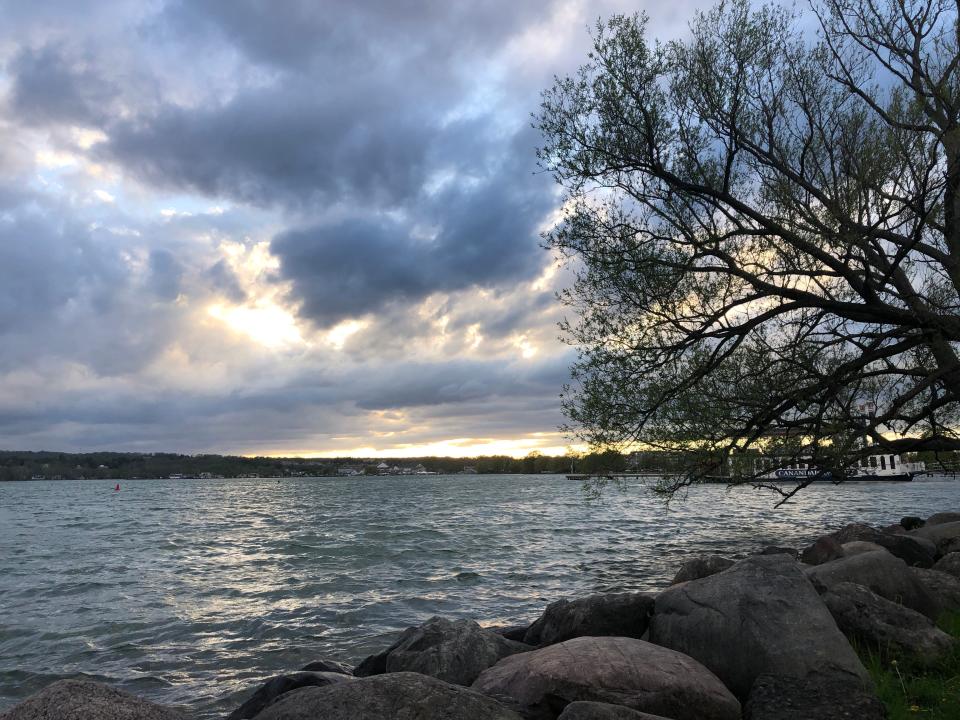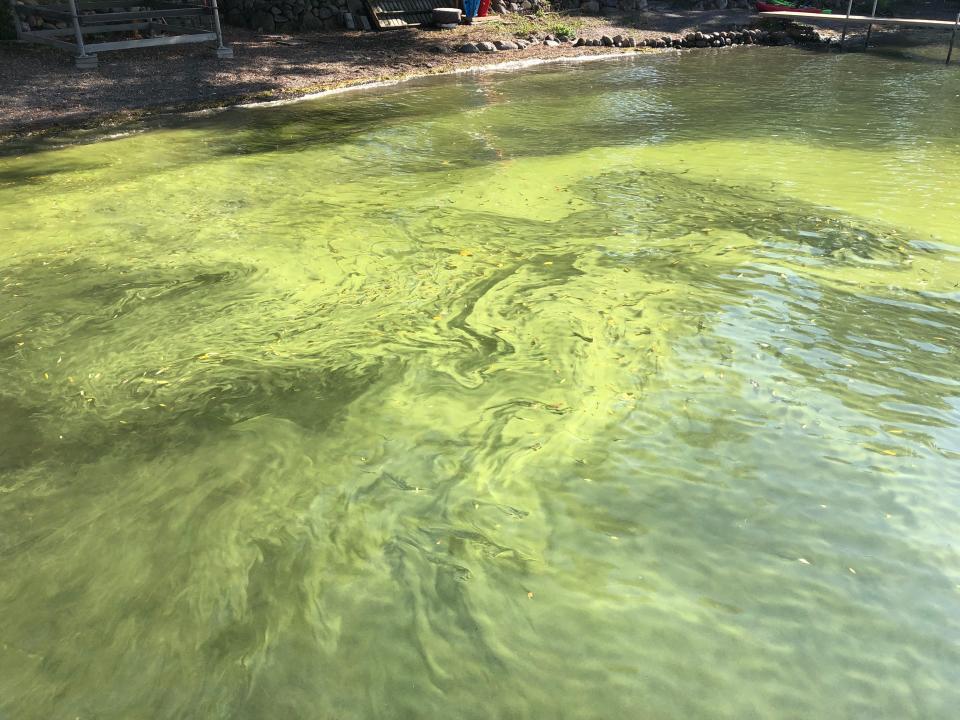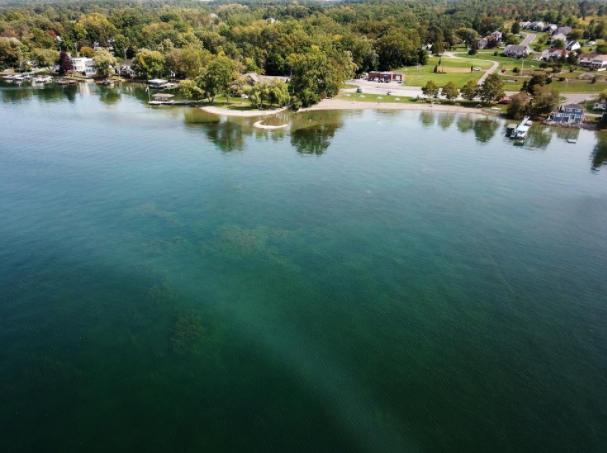Trying to solve the mystery of algal blooms on Canandaigua Lake. Here are four takeaways
CANANDAIGUA, NY — Think of Canandaigua Lake water to drink and to nourish. Think of it to boat, swim and play in. Think of it to connect spiritually, culturally and religiously.
But also consider Canandaigua Lake water economically, said Lisa Cleckner, director of the Finger Lakes Institute at Hobart and William Smith Colleges in Geneva.
Cleckner was one of four speakers at a forum on lake health and water quality May 8 at the Hotel Canandaigua, which greeted attendees with a view of the lake right outside the meeting room window.
The forum, which was sponsored by the Canandaigua Lake Watershed Association, brought together experts to talk about the lake and the science of harmful blue-green algae blooms and other threats to this and other Finger Lakes.
Here are four takeaways from the event.
Clean Canandaigua Lake water is good business
Tourism and agriculture bring $4 billion and $1 billion to the region, respectively, according to 2022 numbers. The Finger Lakes food and beverage industry is a global brand, and becoming more known for it, Cleckner said.
Agricultural land makes up 20% of the watershed, double the percentage of residential property, according to the Canandaigua Lake Watershed Association.
All are reasons to “protect the lifeblood of the region,” Cleckner said.
“Water is the basis of the Finger Lakes economy,” Cleckner said.
Finding answers to problems like blue-green algae on Canandaigua Lake

So how best to go at solving some of the vexing problems facing Canandaigua Lake?
The efforts of scientists and volunteer citizen scientists — a group of more than 70 lake dwellers who collect water samples, assist on several research initiatives and monitor more than 100 sites on Canandaigua Lake — to collect data has been helpful in better understanding what is happening here and at other Finger Lakes, according to Greg Boyer, professor emeritus of biochemistry at SUNY Environmental Science and Forestry.
Water temperature, the amount of light, depth, weather conditions, clarity and more — in some cases this is data collected by volunteers — is backing up what has been observed anecdotally from the last two years and earlier.

When algal blooms occur, they occur in a roughly one-month period, from September to October. More study to determine what the cyanobacteria are eating may help determine why the blooms come when they do, what causes them and importantly, how best to prevent them.
“They have a smorgasbord on a table that is not in front of us,” Boyer said.
Preserving land to preserve Canandaigua Lake
The presence of blue-green algae blooms in the region’s lakes have prompted additional land acquisition strategies, according to Andy Zepp, executive director of the Finger Lakes Land Trust.
The organization still looks to conserve significant open space and wild properties, but also is involved in “plumbing projects” by acquiring properties in the watershed that help to “hold” water in place for a time rather than have it rushing into lakes after heavy storms, Zepp said.
Slowing the water upland creates ephemeral ponds and captures some of the nutrients that once in the lake may help feed the algae. The Land Trust, however, is limited because of property ownership and more such projects are necessary, Zepp said.
“The health of the lake depends on the health of the watershed,” Zepp said.
Looking ahead
What the lake needs is continued attention and study, funding and time, according to the speakers. Having data in place can help scientists and other leaders review long-term changes in water quality and provide a framework for understanding those changes.
Algal blooms and other issues affecting Canandaigua Lake are complex problems with no easy answers, at least no answers at this point without more knowledge.
In the meantime, residents are urged to do their part to keep excess nutrients and pollutants that can contribute to harmful algal blooms, increase aquatic plant growth and the degrade water quality from the lake through programs like the Watershed Association's Lake Friendly Living initiative. That means eschewing chemicals and fertilizers on lawns and reducing household hazardous waste, for example.
Zepp, speaking about the Land Trust specifically, may have summed up the entire exercise.
“We have a long way to go, but we have an opportunity to do some good here,” Zepp said.

Mike Murphy covers Canandaigua and other communities in Ontario County and writes the Eat, Drink and Be Murphy food and drink column. Follow him on X at @MPN_MikeMurphy.
This article originally appeared on MPNnow: Algal blooms on Canandaigua Lake: Four takeaways from forum

